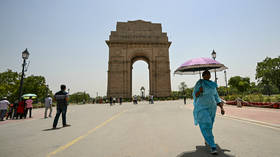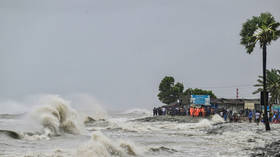Delhi records record high temperature of nearly 50C

Record-breaking temperatures of 49.9C were recorded in Delhi on Tuesday, exceeding normal levels by around 10 degrees. The heatwave looks set to continue, with the India Meteorological Department (IMD) issuing a red warning for Wednesday and an orange warning for Thursday.
According to a study conducted by the Center for Science and Environment (CSE) in Delhi, the extreme heat in the Indian capital is linked to an increase in construction. As the city has expanded and built-up areas have grown from 31.4% in 2003 to 38.2% in 2022, urban heat stress has intensified, the study said.
The South Asian country typically experiences its hottest annual temperatures in April, May, and June before the monsoon season reduces the heat. However, the past decade has witnessed unusually high temperatures. Monsoons are likely to arrive in Delhi and its surrounding areas around June 30, according to the IMD.
On May 26, the IMD issued a red warning for “heatwave to severe heatwave” conditions for several regions in north India, including parts of Rajasthan, Haryana, Chandigarh, Delhi, Punjab, Uttar Pradesh, Madhya Pradesh, Bihar, and Madhya Maharashtra.
Some 60 heat-related deaths have been recorded during the current heatwave, Mint newspapers reported on May 24, citing data from the National Centre of Disease Control (NCDC).
An academic study in 2023 claimed that intense heatwaves in South Asia were now around 30 times more likely due to human-induced climate change. At least 264 people died across 14 states due to heatwaves last year, according to data presented by the Health Ministry in the national parliament.
In contrast, the eastern and northeastern parts of the country are currently grappling with severe rain and thunderstorms brought on by Cyclone Remal. After initially making landfall along the coasts of Bangladesh and India’s West Bengal, Remal has claimed the lives of as many as 37 people in the northeast, where the state of Mizoram has been the worst hit, according to Firstpost. Remal also claimed two lives in West Bengal.
Meanwhile, experts have cited the heatwave as one of the reasons for low voter turnout in the ongoing polls to elect the next government. The voting, conducted in seven phases, began on April 19 and will continue until June 1. The first six phases of voting saw a turnout of 65.63% compared to 67.18% in the same constituencies in 2019, according to the country’s election body.
Where India Meets Russia: Follow and share RT India on X and Instagram













